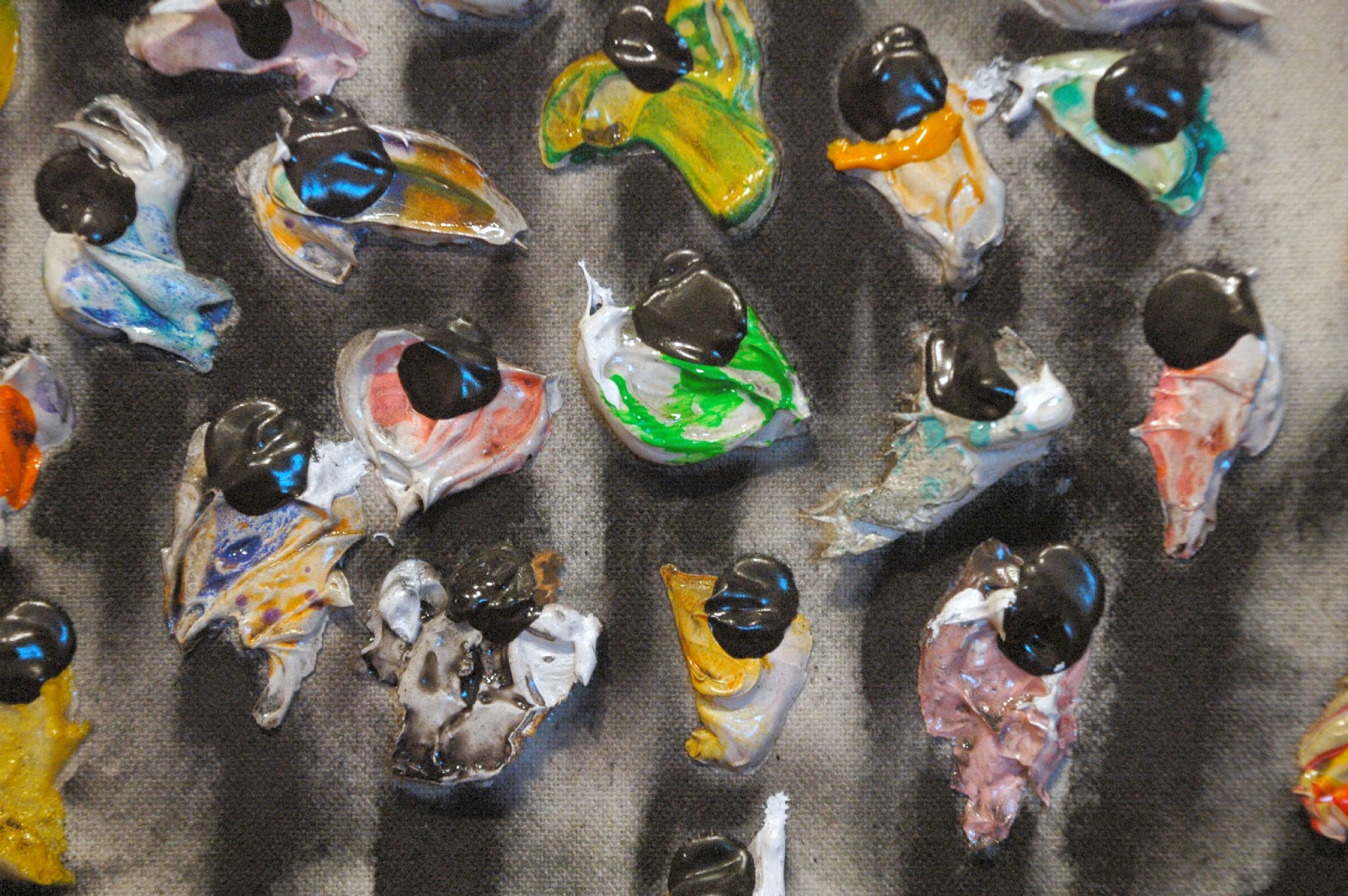29 Jan 2015. <ES> Toledo, Castile-La Mancha —

The view from the bridge
Today was a v-e-r-y interesting day. We walked back into Toledo, but this time skirting the southwest wall and up via some escalators near the Cambrión Gate. This took us virtually straight into the old Jewish Quarter, where there is the El Greco Museum, and also a Sephardic Museum set up in an old synagogue. But first we walked round past the most spectacular old bridge — the San Martin Bridge. This old bridge is quite a tourist attraction — when we got there, a tourist bus was disgorging passengers on the other side. Luckily, they didn't stay long — another good reason for making one's own way around a country — there's no rush!
We then walked up into the Jewish Quarter and round to the Casa del Greco and the Sinagoga de Transito (now the Sephardic Museum). On the way there, we had a most interesting — and not very nice — experience. Suzie was hit with what she thought was bird droppings, and a couple rushed up to her very solicitously to help her out. Fortunately we had become aware of this scam — a couple will squirt you with not-very-nice food sauce (in our case, we think it was some kind of pickle sauce), then come and clean you up, all the while stripping your pockets clean. In our case, they chose the wrong target, as Suzie doesn't carry anything valuable — Warren has that duty, as he has a myriad of secure inner pockets. And Warren was on top of it straight away, warning them off and calling Suzie to him. We sought help in a nearby shop, and the shopkeeper directed us to a public toilet close by where we could do a reasonable job of cleaning up, well sufficient to go on with our day. As we came out of the toilet and made our way to the El Greco House, Suzie spied our two assailants, and revealed a talent she has kept hidden for decades — she gave them such a tongue lashing!
Our first port of call was the burial chapel of Don Gonzalo Ruíz de Toledo, gentleman of Orgaz and the head notary of Castile. This is at the foot of the church of Santo Tomé, very near Casa del Greco. Above the tomb itself is what is commonly regarded as El Greco's masterpiece — The burial of Count de Orgaz.
The story behind it is intriguing, and the painting itself is breathtaking. It was painted specially for the place it is hanging, so its upper curve fits perfectly into the alcove. It divides into two distinct halves, with the lower part painted in a very realistic manner, and the upper part in El Greco's allegorical style, with elongated figures and somewhat arbitrary colours. When Warren first saw later allegorical El Greco paintings, he was amazed at the similarity of these and Picasso's earlier Blue Period works, even though about 350 years separate them!
Anyway, the Casa del Greco. This is not actually El Greco's house. A civic benefactor, round the turn of the 19th-20th century, decided to recreate a dwelling of the type El Greco would have had, in the general vicinity of where he had lived. This was an intentional move to raise the profile of the artist and also to create more tourist interest in Toledo. It worked. The house gives you a good idea of how he would have lived and worked, and as an added bonus, when they started building, they found intact beneath it the cellars of the mansion of Samuel Levi, King Don Pedro's treasurer. These are also on display. In the museum are a number of contemporary copies of El Greco works held elsewhere, but there is also his entire series of the 12 apostles (although 3 were currently on loan to other international museums). There is also a wonderful painting be El Greco of the city of Toledo — from it, you can see that little has changed in the past 450 years!

Then into the Sephardic Museum. You don't often get a good glimpse of the Jewish history of a place, but this old synagogue has the lot. The main hall is still left as a large open space, although there is a large modern painting on display there.
There are historical exhibits in the side rooms, and in the upstairs Women's Gallery, and outside in the courtyards are some old tombstones and some modern sculptures.
It all goes to show that the Jewish presence in Toledo was long-standing, until the expulsion of the Jews during the Inquisition.
We left to walk back to the van, passing on the way the Monasterio de San Juan de los Reyes, and we detoured in to look around. Totally worth while. The double cloister is delightful, and had orange trees growing in the middle of the courtyard. The church itself is a large space, different from anything we have seen so far. The ornate retable behind the altar, although not as spectacular as the one in the cathedral, is significant in its own right! Plainchant was coming from hidden speakers as we walked about, and we spent a most relaxing hour of peace and contemplation there.





















































